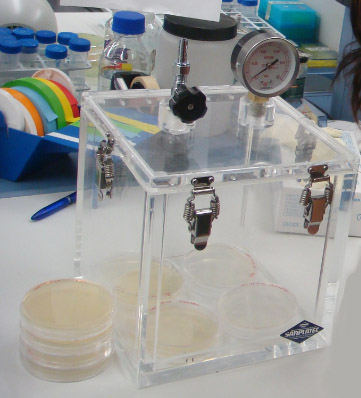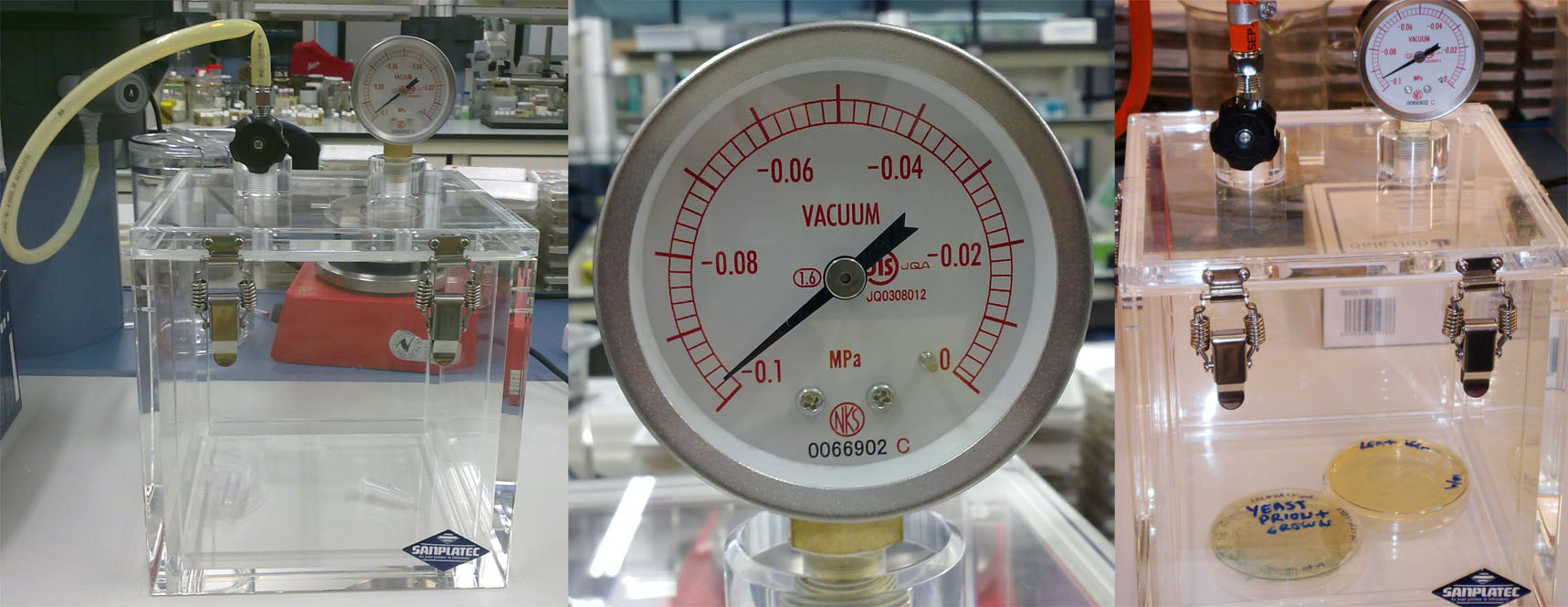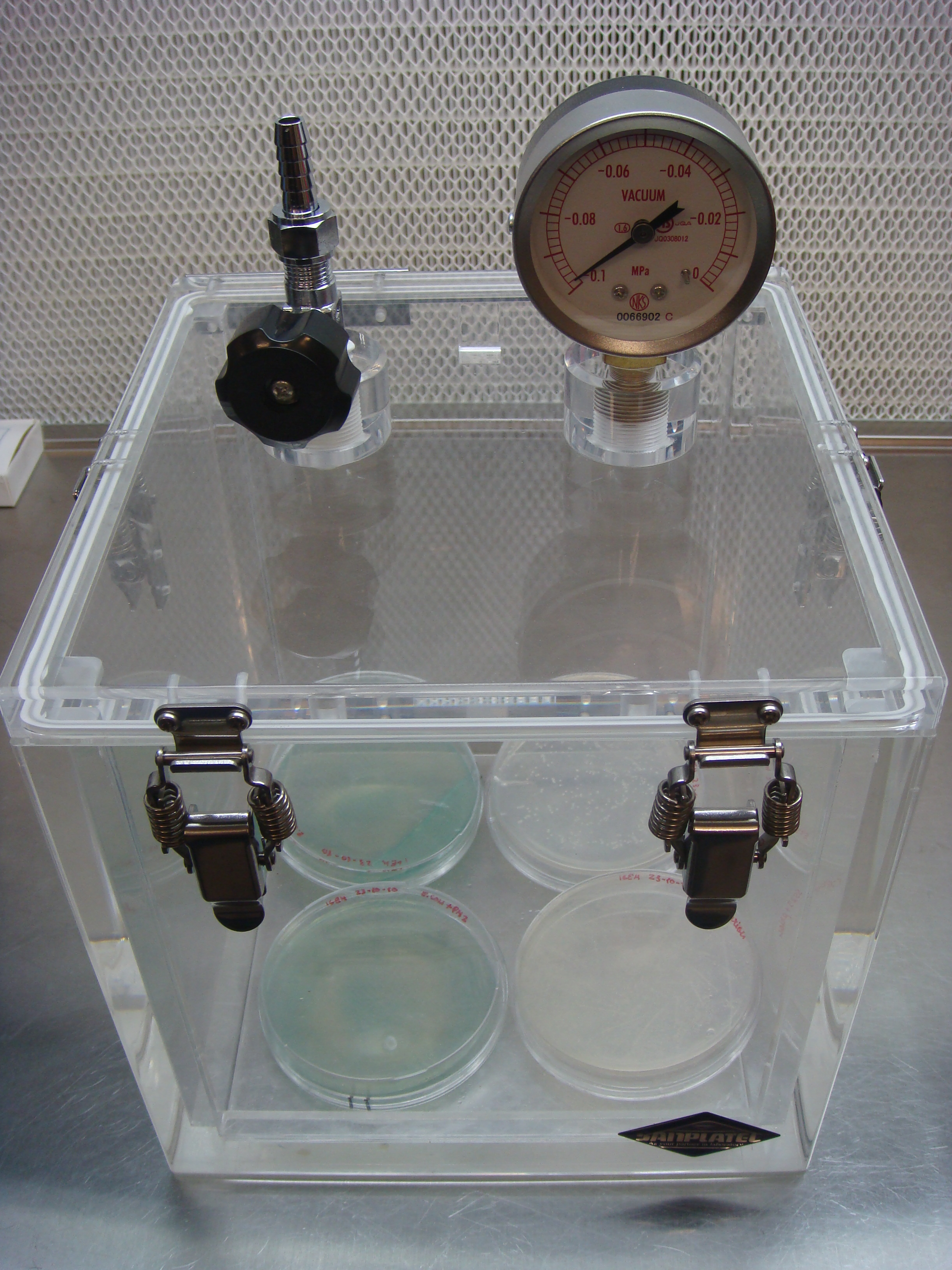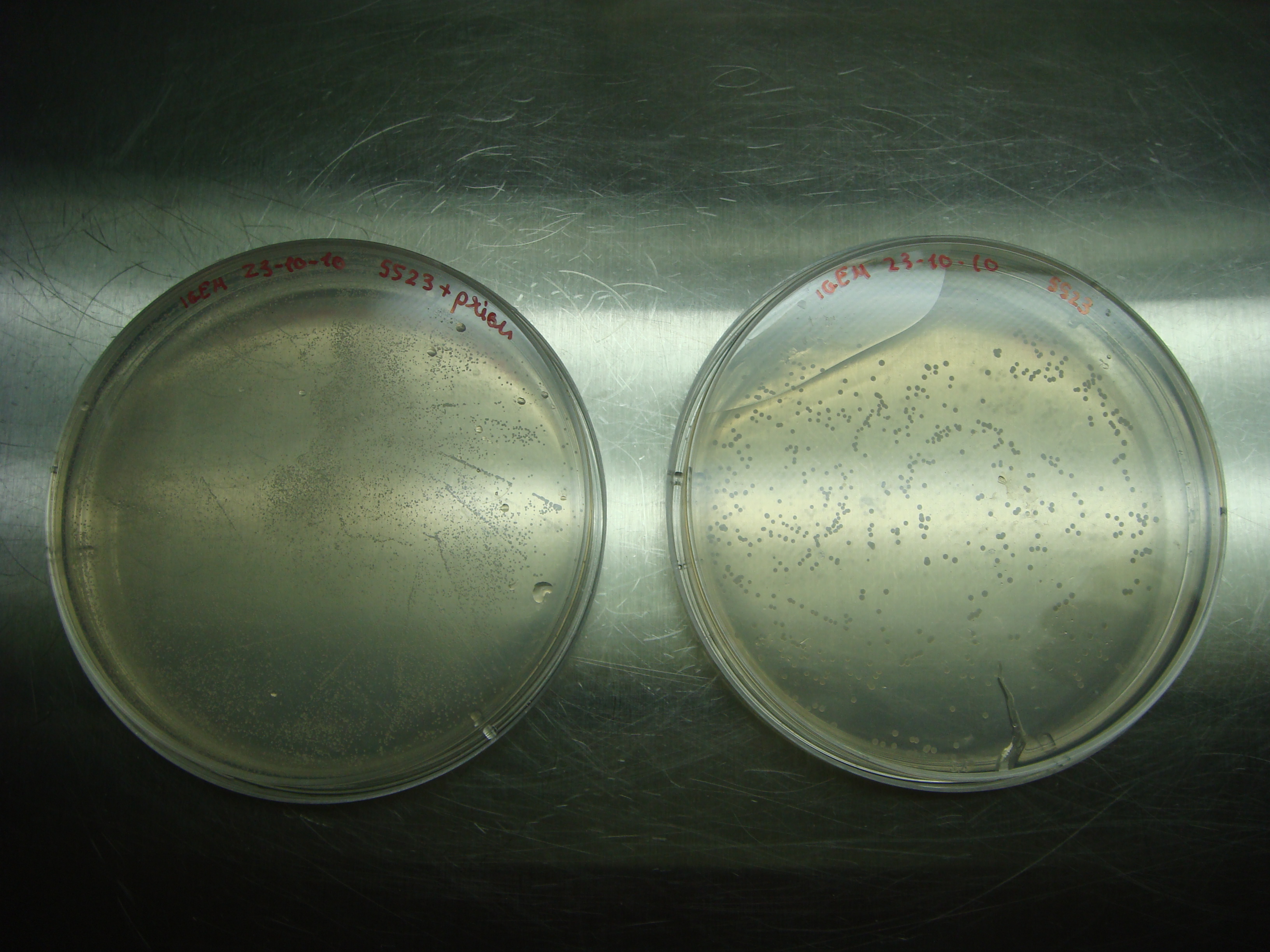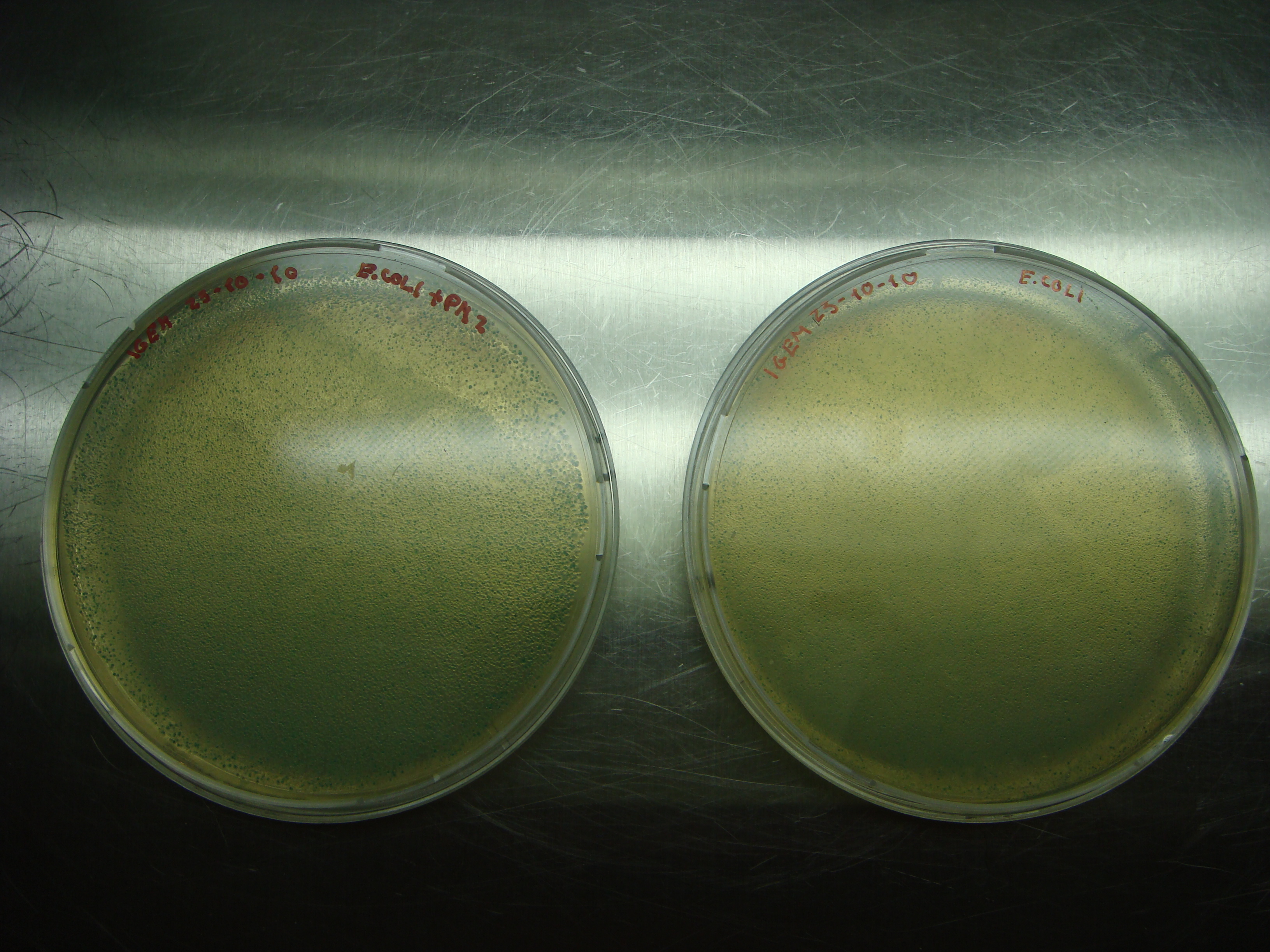Team:Valencia/MSC
From 2010.igem.org
Alejovigno (Talk | contribs) (→The experiment) |
Alejovigno (Talk | contribs) (→The experiment) |
||
| Line 55: | Line 55: | ||
[[Image:valencia_msc_pic1.jpg|400px|thumb|center|Cultures growing inside the Mars Simulation Chamber.]] | [[Image:valencia_msc_pic1.jpg|400px|thumb|center|Cultures growing inside the Mars Simulation Chamber.]] | ||
| - | [[Image:valencia_msc_pic2.jpg| | + | [[Image:valencia_msc_pic2.jpg|327px|thumb|right|Saccaromices cerevisiae cultures.]] |
| - | [[Image:valencia_msc_pic3.jpg| | + | [[Image:valencia_msc_pic3.jpg|327px|thumb|left|E. coli cultures.]] |
| + | . | ||
In the pictures below we can appreciate the growth of each culture. Saccharomices cerevisiae grew with no problems at all in a rich CO2 atmosphere. The very low pressure conditions did not affect the yeast in anyway either. Yeasts dealt with martian conditions very well. | In the pictures below we can appreciate the growth of each culture. Saccharomices cerevisiae grew with no problems at all in a rich CO2 atmosphere. The very low pressure conditions did not affect the yeast in anyway either. Yeasts dealt with martian conditions very well. | ||
Revision as of 21:56, 27 October 2010
Time goes by...
(El tiempo pasa...)
Follow us:

Our main sponsors:

Our institutions:

Visitor location:
» Home » The Project » Creating Technologies
Mars Simulation Chamber
Introduction
We reproduce some of the characteristics that make difficult the life in Mars with this chamber. Among them we can have the atmospheric pressure between 7 and 10 mbar and the gases composition (mainly carbon dioxid).
Once we achieve this humble goal, we can use the MSC to try our engineered microorganisms and observe its behavior: if it grows, just only survives without growing or dies. It’s a very important part of the project because is an easy way to prove whether the microbes can grow or at least survive in an environment with such limitations as martian atmosphere can be.
Goal
To simulate the martian atmospheric pressure and composition in order to check the surviving capability of our engineered cultures.
The equipment
Mars is an extremely harsh environment for any kind of known life form. There is no liquid water, the temperature range on the planet goes from -80º C to 20º C and the atmospheric pressure is around 7-15 mbars. Moreover, the atmospheric composition has a 95% of CO2 with no O2 present in practical terms. In the next table it is shown the main physical characteristics of Mars compared with Earth.
In this project we focus on two parameters: temperature and atmospheric pressure. Our main strategy for surviving Mars is expressing LEA protein in our cultures. In order to face the temperature issue we have designed and built a device we called Red House but in this section we will try to explain you what have we done to deal with the tough pressure conditions.
Obviously, the first step to take in order to check the capability of our cultures to survive Mars is to subject them to similar conditions here on Earth. We, basically, focused on simulating the most important atmospheric properties:
- Pressure
- Composition
Thanks to our sponsors we had the opportunity of visiting the National Astrobiology Center in Madrid. There we could visit their laboratories and equipment and talk with the researchers working with them. It was specially interesting the section of Instrumentation for Planetary Exploration and Simulation Chambers. Thanks to them we defined our goals with much more precision and we realized what parameters were reasonable to simulate with our time and budget.
Back from Madrid we decided that in order to simulate the martian pressure we would use a low pressure chamber. Its volume is 8 l, which is very appropriate for conducting small experiments with several cultures. The pressure that it is capable to reach is around 10 mbars, which is perfect to simulate the martian conditions.
The following pictures show the MSC connected to the vacuum pump in the lab.
The second atmospheric parameter we wanted to simulate was the composition. As it has been shown previously, the martian atmosphere is mainly CO2. We used frozen carbon dioxide to generate the CO2 inside the chamber. The amount of frozen carbon dioxide needed to fill the chamber was calculated. On the other hand, CO2 is (fortunately for us!) heavier than N2 and O2 so the CO2 pushes out those gases as it becomes gas inside the MSC. Therefore, in order to achieve a martian atmosphere, we only had to wait until the frozen carbon dioxide became gas and then close the chamber and connected to the pump. In the next picture you can see the process:
In short, we simulate the martian atmosphere by using a low pressure chamber and frozen carbon dioxide. In this context we carried out a series of experiments with our Saccharomyces cerevisiae and E. Coli cultures.
The experiment
We developed a series of simple experiments in order to check the survival and growing capability of our engineered cultures exposed to the martian-like environment inside the Mars Simulation Chamber.
Both yeasts and bacteria cultures were placed inside the MSC. Two different controls were disposed for each culture. The first control was placed inside the MSC as well but it lacked any genetic modifications (neither prionic switch in yeasts or expressing LEA protein in bacteria). The second control was located outside the MSC with normal pressure and Earth atmosphere composition. The entire duration of the experiment was about 5 days.
.
In the pictures below we can appreciate the growth of each culture. Saccharomices cerevisiae grew with no problems at all in a rich CO2 atmosphere. The very low pressure conditions did not affect the yeast in anyway either. Yeasts dealt with martian conditions very well.
E. coli showed a slower growth than yeast probably due to its difficulty to live in a CO2 rich environment. Low pressures did not affect them in anyway, or at least, it was not a growth limiting factor.
 "
"
